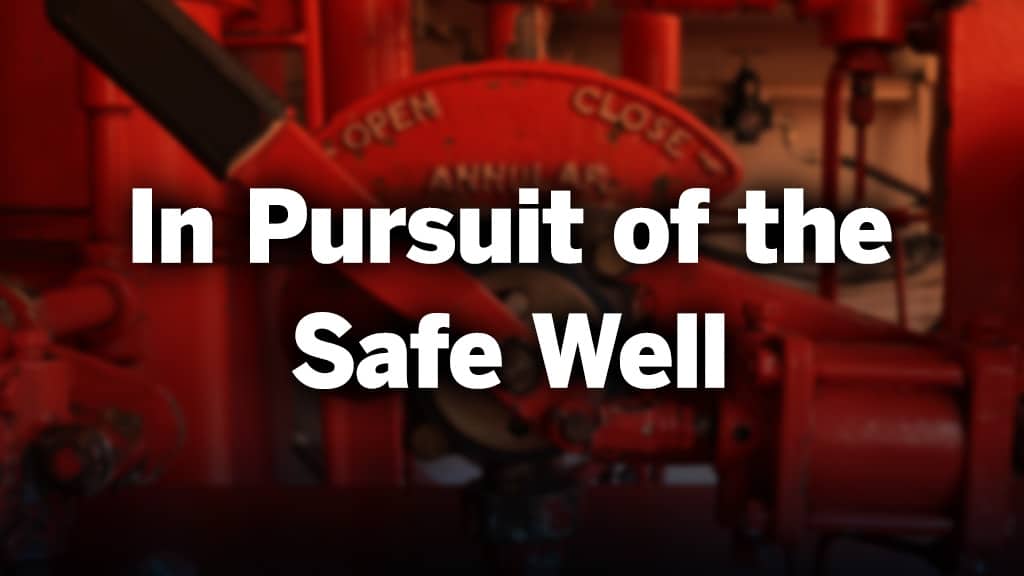This course pursues content in regard to the basics of a well, various considerations for drilling a well, specifically for oil and gas production, how to mitigate risks associated with drilling a well and resource extraction, as well as different well control procedures. This course also entails a design challenge to familiarize students with different assessment methods that are completed prior to drilling a well, such as pressure readings within the wellbore and the underlying formation, where the well is drilled into for hydrocarbon extraction. Additionally, the course includes a case study on the notorious Deepwater Horizon blowout, that occurred within the Macondo Prospect, offshore Gulf of Mexico, in 2010.
The considerations for oil and gas exploration and drilling a successful well include fundamentals in both geology and engineering. In order to drill for hydrocarbon extraction, geologic components must be present that entail all elements to a petroleum system. Engineering components must also be assessed to properly construct a well that will not be prone to leaks and contamination.
During drilling operations and throughout production, well control procedures may be instituted in the event of present risks, such as a leak in the well casing, or hazards of a blowout. There are three tiers of well control; primary, secondary, and tertiary. These procedures are implemented in order, based on the associated risks. Students will also become familiar with containment risk methods, such as the Swiss Cheese Model of Accident and Causation, utilized to prevent barriers for mitigating potential hazards.
Other lessons within the course address the various components that go into constructing a well such as mud and casing, serving as prerequisite information for the design challenge that students will have an opportunity to complete. Throughout the course, examples of well failure events are used to illuminate scenarios where control procedures have been used, helping the students to understand the importance of best practices and safety. A case study on the Macondo Prospect is included, that takes a deep dive into the blowout that occurred on the Deepwater Horizon in April of 2010 after a series of faulty test readings and failed control procedures. To begin this course, click on the lesson “What is a Well?” Lessons and topics (that can be shown by clicking on the expand button to the right of each listed lesson below) will then go in order for students to complete.
Earth and Space Science
Earth Systems Science
Environmental Systems
Engineering Science
Principles of Applied Engineering
Chemistry
Physics
Integrated Physics and Chemistry
Foundations of Energy
Oil and Gas Production I
Oil and Gas Production II
Oil and Gas Production IV
Petrochemical Safety, Health & Environment
Earth and Space Sciences
Engineering, Technology, and Applications of Science
Life Sciences
Physical Science
Lessons
What is a Well?
This lesson examines the basics of a well, different well types, regulatory measures for contamination prevention, and the stages of well construction and completion.
Geologic Considerations When Drilling a Well
This lesson takes into account the geologic considerations prior to and while drilling a well.
Engineering Considerations When Drilling a Well
This lesson takes into account the various engineering considerations that must be completed to identify and mitigate risks throughout construction and production of the wellbore.
Containment Risk
This lesson takes into account the various engineering considerations that must be completed to identify and mitigate subsurface containment risks throughout construction and production of the wellbore.
Primary Well Control
Both mud density and casing offset the pressures that could result in the influx of fluids (a kick) into the wellbore. Understanding pressure and pressure relationships in the well are critical to maintaining well control.
Drilling Mud
This lesson will help students gain a better understanding of the importance and purpose of drilling mud/drilling fluids throughout the drilling process.
Cement and Casing
This lesson discusses how engineers construct a well using steel pipe, called casing.
